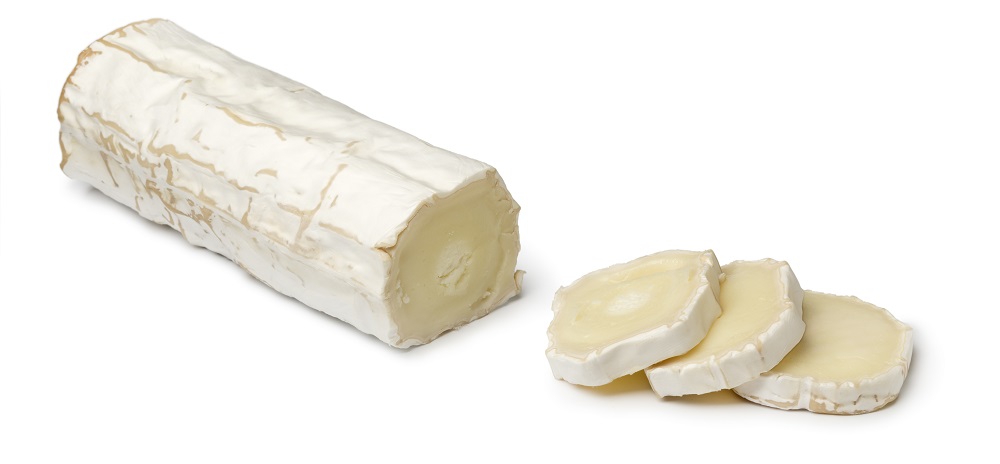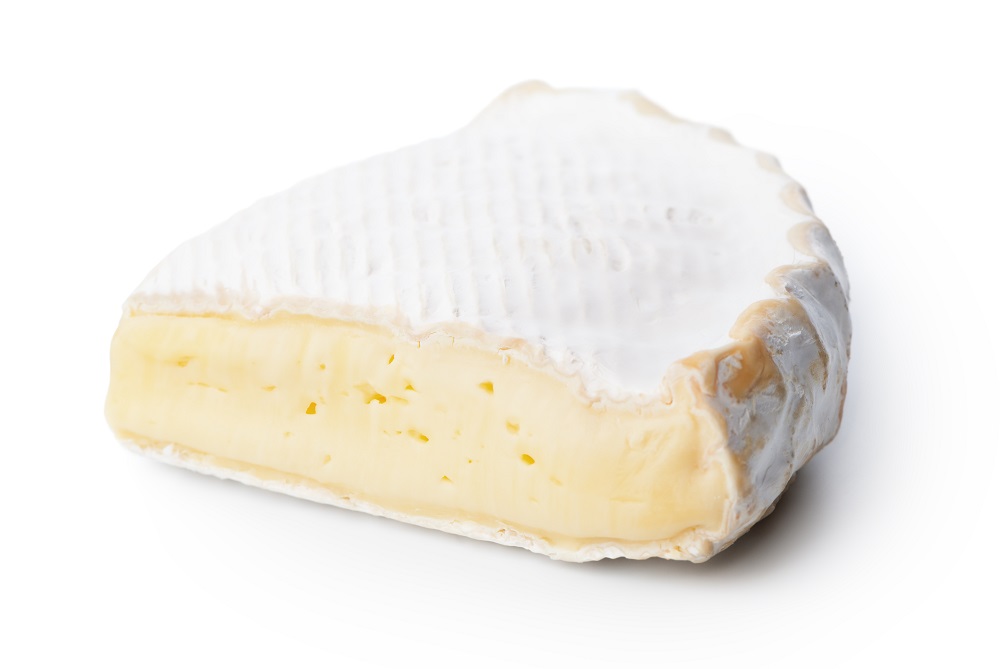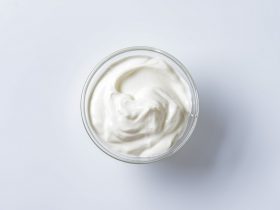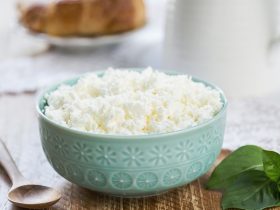Goat cheese is a dairy product enjoyed anywhere in the world. It is creamy and has a distinct flavor, and comes in a wide variety of ages, textures and forms. Like regular cheese, some types of goat cheese are safe, while others are not, depending on the variety and method of preparation.
Mold-ripened goat cheese and soft goat cheese that are made with unpasteurized milk are at increased risk of Listeria contamination and should not be consumed by pregnant women. Hard goat cheese and soft goat cheese that are made with pasteurized milk have lower chances of causing an infection and are considered safe to eat during pregnancy.
Jesmarie Macapagal, RN, MD, DPPS
This article will discuss the different types of goat cheese, as well as the risk of listeriosis during pregnancy. Following are recommendations for general cheese consumption, then focusing on which goat cheeses are not safe and which ones are safe for pregnant women to eat.
Types of Goat Cheese
Standard cheese is generally made with cow’s milk. However, cheese can also be made using goat’s milk. Chèvre is the term used for any cheese made from goat’s milk.
Chèvre is the French word for “goat” and is short for “fromage de chèvre” or “cheese of goat”. Although in the United States, the most common form of chèvre is soft and fresh, chèvre can actually be made into other forms of cheese, including hard and aged.

Most goat cheeses are softer and have a tangier flavor than cow cheese. Goat cheese softens well under heat without melting. It has similar fat content, but relatively lower lactose content, compared to cow cheese.
The nutritional content of goat cheese varies depending on the process and methods used, including aging or curing. Compared to cow’s milk, goat’s milk has smaller fat globules, has higher tolerability and better digestibility, and contains more short- and medium-chain fatty acids (Sepe & Argüello, 2019).
Goat cheese has many different varieties depending on how the goat’s milk is prepared:
- Fresh chèvre – This is the most common type of goat cheese. It is white, moist, mild, and does not have a rind. It is often enjoyed in just a few days of production and has the mildest flavor. It is soft and spreadable, and often sold and served in a log shape. It can be eaten plain or mixed with fresh herbs.
- Valençay – Also called pyramide, this goat cheese is aged for about three weeks. As goat cheese ages, it darkens to a yellow hue and develops a rind. Valençay has a thin, gray-blue rind dusted with charcoal. It has a citric taste and is sold in the shape of a pyramid with a flattened top.
- Bûcheron – This is a semi-aged goat cheese that is ripened for 5 to 10 weeks. It has a bloomy rind and also sold in a log shape. The cheese becomes drier and more crumbly with aging, and tastes tangier.
Other cheeses that are often made with cow’s milk can be made with goat’s milk instead. These include Camembert, Brie, feta, cream cheese, and cheddar.
Listeriosis During Pregnancy
Cheese consumption has been a frequent concern among pregnant women because of the risk of food borne diseases that have been associated with different kinds of dairy products. In the European Union in 2006, 0.4 percent of all food borne outbreaks were found to be related to consumption of contaminated cheese (Kousta et al., 2010).
Listeriosis is a rare food borne illness that is more common among pregnant women, who are estimated to be 20 times at greater risk, compared to the general population. Pregnant women account for up to 27 percent of all listeriosis infections (Janakiraman, 2008), which can lead to a benign course of illness among mothers but can have serious consequences to the fetus or newborn.
Listeria monocytogenes is able to cross the placenta (Janakiraman, 2008) and infect the fetus. Some of the cases lead to severe neonatal disease, or death of the fetus or newborn (Mylonakis et al., 2002), with a case fatality rate of 20 to 30 percent (Janakiraman, 2008). L. monocytogenes can also cross the blood-brain barrier to cause meningitis or encephalitis (Temple & Nahata, 2000).
Maternal infection can present with no symptoms or follow a mild, flu-like illness, with fever, muscle aches, nausea or diarrhea. On the other hand, fetal and neonatal infections are often severe and frequently lead to death. Intrauterine infections of listeriosis have resulted in spontaneous abortion, still births, preterm labor, and early-onset neonatal sepsis (Janakiraman, 2008).
Recommendations for Cheese Consumption in Pregnancy
Pregnant women can reduce their risk of developing listeriosis from eating cheese by following the recommendations from the Centers for Disease Control and Prevention (CDC):
- Read the label and make sure that it says “made with pasteurized milk”.
- Remember that Hispanic-style cheeses, even those made from pasteurized milk like queso fresco, have caused Listeria infections in the past.
- Avoid eating soft cheeses, including queso fresco, queso blanco, queso panela, Brie, Camembert, blue-veined, and feta cheese, unless it is clearly labeled as made with pasteurized milk.
- Learn more about Queso cheese during pregnancy
Goat Cheeses that are Not Safe During Pregnancy
Mold Ripened Goat Cheese
Chèvre, goat Brie and Camembert should be avoided by pregnant women, unless it has been cooked. Any type of uncooked goat cheese that has a mold-ripened rind is not safe because of higher incidence of Listeria contamination.

Also called surface ripened cheese, mold ripened goat cheese is more susceptible to bacterial contamination post-pasteurization because of high moisture content (Camembert has 70 percent moisture compared to cheddar cheese that has only 42 percent moisture). L. monocytogenes, thus, grows and multiplies more readily in these cheeses (McIntyre et al., 2015).
Additionally, mold ripened cheeses are typically aged at a temperature of 10 degrees Celsius. This increases the alkalinity of the cheese because of the growth of bacteria and molds on the surface of the cheese rind (McIntyre et al., 2015).
Mold ripened cheeses are refrigerated up to 3 months after aging, also contributing to a favorable condition for L. monocytogenes to grow (D’Amico et al., 2008), as Listeria is known to survive at a wide range of temperatures from 4 to 37 degrees Celsius (Janakiraman, 2008).
Unpasteurized Soft Goat Cheese
According to the CDC, as well as the U.S. Food and Drug Administration (FDA) and Health Canada (2012), the risk of listeriosis for every serving of soft cheese made with unpasteurized milk is 50 to 160 times more than those made with pasteurized milk.
Soft cheeses favor the growth of L. monocytogenes because of their relatively high amounts of moisture. Other properties, like pH and salt concentration, as well as factors during processing are also important determinants of growth (Heiman et al., 2016).
Unpasteurized milk has repeatedly been implicated as a source of food borne infections and outbreaks (Langer et al., 2012). Raw milk can become contaminated even before cheese-making because cows and goats can shed L. monocytogenes in their milk during lactation, and fecal contamination of raw milk can happen during milking (Heiman et al., 2016).
According to the CDC, milk that has not been pasteurized can contain Salmonella, Campylobacter, Escherichia coli, and Listeria. Raw milk is more commonly consumed in France, and has been an identified cause of 16 major Salmonella outbreaks there from 2008 to 2018 (Robinson et al., 2020).
Coalho cheese is a traditional product of Northeast Brazil that is produced from raw goat’s milk. 40 commercially produced Coalho goat cheese samples from eight municipalities in Brazil were analyzed by Castro et al. in 2018.
It was found that strains of E. coli, Salmonella, Listeria and Staphylococcus aureus were present and that these pathogens were all multidrug resistant (MDR). The most commonly isolated bacterium in this study was S. aureus (Castro et al., 2018).
Goat Cheeses that are Safe During Pregnancy
Pasteurized Soft Goat Cheese
Safe types of goat cheese include those made with pasteurized milk. Pasteurization effectively kills all harmful pathogens found in raw milk.
Pasteurization is defined as “the process of heating every particle of milk or milk product, in properly designed and operated equipment, to any 1 of the specified pasteurization time/temperature combinations.” The most common treatment is rapidly heating milk to a minimum of 72 degrees Celsius and maintaining that temperature for at least 15 seconds (Lucey, 2015).
Most cheese sold in supermarkets in the United States are pasteurized because the FDA prohibits the sale of raw milk. However, farmer’s markets may still sell unpasteurized goat cheeses, so pregnant women must still be careful and always check the label.
Likewise, pregnant women must remember that not all pasteurized cheeses are safe. Although the process of pasteurization kills all harmful bacteria, including Listeria, soft cheeses can still be contaminated with L. monocytogenes even when the milk used is pasteurized in cases of unsanitary conditions during and after the cheese-making process (Choi et al., 2014).
Hard Goat Cheese
Hard goat cheeses are also considered safe from Listeria contamination because of their low moisture level, which makes it difficult for harmful pathogens to grow in. Both pasteurized and unpasteurized hard cheeses are, therefore, deemed safe to eat during pregnancy.
Hard goat cheeses do not have a soft rind. Goat Gouda is an example of hard cheese produced in the Netherlands.
Cooked Goat Cheese
All types of goat cheese, including fresh chèvre, mold-ripened cheese, and soft goat cheese, can be made safe by cooking. Cooking is another way to kill harmful bacteria, including Listeria.
According to the CDC, an internal temperature of at least 165 degrees Fahrenheit (or 74 degrees Celsius) must be reached when cooking cheese. Hence, cooked sauce, tart, or pizza containing goat cheese are all safe to eat, as long as they have been heated until steaming hot.
Final Thoughts
There are a lot of different types of goat cheese available. Knowing which ones are safe, and which are best to avoid, is important to prevent the risk of food borne infections during pregnancy.
Hard cheeses and pasteurized goat cheeses are generally safe for consumption by pregnant women. However, soft cheeses made with raw milk and mold-ripened goat cheeses, such as Brie or Camembert, are not safe and are likely to cause serious infections.
Thorough cooking is one way to ensure the safety of goat cheese. Eating cheese that was cooked until steaming hot in sauces, tarts, or on top of pizzas is considered safe for pregnant women.
Ask your doctor for the best goat cheese that you can safely add to your pregnancy diet.
References
- https://www.healthline.com/nutrition/goat-cheese
- https://www.healthline.com/nutrition/goat-cheese-pregnancy
- https://www.cdc.gov/listeria/prevention.html
- https://www.cdc.gov/foodsafety/pdfs/raw-milk-infographic2-508c.pdf
- Castro, R. C., David de Oliveira, A. P., Rodrigues de Souza, E. A., Correia, T. M., Viana de Souza, J., & Dias, F. S. (2018). Lactic acid bacteria as biological control of Staphylococcus aureus in Coalho goat cheese. Food Technology & Biotechnology 56(3), 431-440. doi: 10.17113/ftb.56.03.18.5736
- Choi, M., Jackson, K., Medus, C., Beal, J., Rigdon, C., Cloyd, T., …, & Centers for Disease Control and Prevention (CDC). (2014). Notes from the field: Multistate outbreak of listeriosis linked to soft-ripened cheese: United States, 2013. MMWR: Morbidity and Mortality Weekly Report 63(13), 294-295. https://www.ncbi.nlm.nih.gov/pmc/articles/PMC5779354/
- D’Amico, D., Druart, M., & Donnelly, C. (2008). 60-day aging requirement does not ensure safety of surface-mold-ripened soft cheeses manufactured from raw or pasteurized milk when Listeria monocytogenes is introduced as a postprocessing contaminant. Journal of Food Protection 71(8), 1563-1571. doi: 10.4315/0362-028x-71.8.1563
- Heiman, K. E., Garalde, V. B., Gronostaj, M., Jackson, K. A., Beam, S., Joseph, L., …, & Silk, B. J. (2016). Multistate outbreak of listeriosis caused by imported cheese and evidence of cross-contamination of other cheeses, USA, 2012. Epidemiology and Infection 144(13), 2698-2708. doi: 10.1017/S095026881500117X
- Janakiraman, V. (2008). Listeriosis in pregnancy: Diagnosis, treatment, and prevention. Reviews in Obstetrics & Gynecology 1(4), 179-185. https://www.ncbi.nlm.nih.gov/pmc/articles/PMC2621056/
- Kousta, M., Mataragas, M., Skandamis, P., & Drosinos, E. (2010). Prevalence and sources of cheese contamination with pathogens at farm and processing levels. Food Control 21(6), 805-815. https://doi.org/10.1016/j.foodcont.2009.11.015
- Langer, A., Ayers, T., Grass, J., Lynch, M., Angulo, F., & Mahon, B. (2012). Nonpasteurized dairy products, disease outbreaks, and state laws: United States, 1993-2006. doi: 10.3201/eid1803.111370
- Lucey, J. (2015). Raw milk consumption: Risks and benefits. Nutrition Today 50(4), 189-193. doi: 10.1097/NT.0000000000000108
- McIntyre, L., Wilcott, L., & Naus, M. (2015). Listeriosis outbreaks in British Columbia, Canada, caused by soft ripened cheese contaminated from environmental sources. BioMed Research International 2015, 131623. doi: 10.1155/2015/131623
- Mylonakis, E., Paliou, M., Hohmann, E., Calderwood, S., & Wing, E. (2002). Listeriosis during pregnancy: A case series and review of 222 cases. Medicine 81(4), 260-269. doi: 10.1097/00005792-200207000-00002
- Robinson, E., Travanut, M., Fabre, L., Larréché, S., Ramelli, L., Pascal, L., …, & Jourdan-Da Silva, N. (2020). Outbreak of Salmonella Newport associated with internationally distributed raw goats’ milk cheese, France, 2018. Epidemiology & Infection 148, e180. doi: 10.1017/S0950268820000904
- Sepe, L., & Argüello, A. (2019). Recent advances in dairy goat products. Asian-Australasian Journal of Animal Sciences 32(8), 1306-1320. doi: 10.5713/ajas.19.0487
- Temple, M. E., & Nahata, M. C. (2000). Treatment of listeriosis. The Annals of Pharmacotherapy 34(5), 656-661. doi: 10.1345/aph.19315
- U.S. Food and Drug Administration (US FDA), & Health Canada. (2012). Quantitative assessment of the risk of listeriosis from soft-ripened cheese consumption in the United States and Canada: Draft report. https://www.fda.gov/media/84975/download




